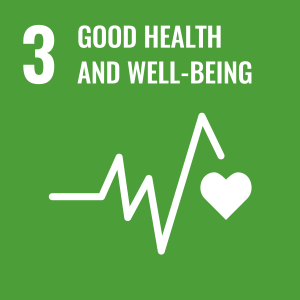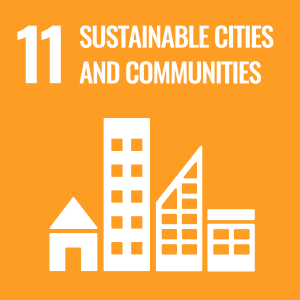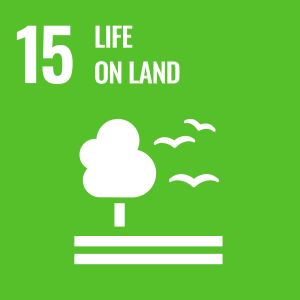
Dr Nidhi Rawat
Sustainable development goals
My research interests are related to the following:




Publications
In naturally ventilated classrooms, the air quality and ventilation conditions rely heavily upon window and door opening behaviour of the class teacher. This study aimed to examine the impact of an Internet of Things (IoT)-based CO₂ self-surveillance display system (SAVE unit) on classroom air quality and thermal comfort. The visual-acoustic signalling of classroom ventilation conditions notified the class teacher for opening/closing of classroom doors and windows. The air quality data were collected across baseline (no alarm), S1 (visual alarm) and S2 (visual-acoustic alarm) scenarios. The alarm was triggered to notify a class teacher when CO₂ exceeded 1000 and 1500 ppm with different alarm schemes. Results showed a 19.5 % reduction in CO₂ with visual alarms and 19 % with visual-acoustic alarms. However, PM concentrations (PM₁₀, PM₂.₅, PM₁, PM₀.₁) increased due to window openings, though a daily average of PM₁₀ and PM₂.₅ remained within WHO safe limits. Teacher's decision to open or close windows was primarily influenced by classroom temperature. Higher CO2 concentration was observed during colder days (S2) due to windows kept closed to avoid uncomfortable classroom temperature and excessive use of heaters. The SAVE unit helped to effectively lowered CO₂, but it also led to higher energy consumption due to heat loss from open windows. While natural ventilation improved air quality, it highlighted the need for balancing energy efficiency and thermal comfort A holistic signalling system that integrates temperature, air quality, and ventilation parameters would better guide teachers in managing classroom ventilation. Additionally, a school-level ventilation protocol based on IoT-based signalling is recommended to ensure consistent and effective air quality management. This study underscores the importance of real-time data-driven ventilation strategies to optimise indoor air quality, reduce exposure to pollutants, and maintain a comfortable learning environment in classrooms. [Display omitted] •Ventilation behaviour induced by the visual alarm reduced classroom CO₂ by 19.5 %.•Ventilation behaviour induced by the visual-acoustic alarm reduced classroom CO₂ by 19 %.•Classroom PM increased due to window opening but remained under WHO limits.•Visual alarm is preferred in classrooms as it causes less distraction than visual-acoustic alarm.•Higher energy use could hinder large-scale adoption of such systems in natural-ventilated schools.
Green infrastructure (GI) is known to reduce road air pollution exposure, but their implementation in schools and associated benefits remain under-researched. In this study, two GI solutions, green screen and green gate, were co-designed and installed at a primary school in Guildford using collaborative and participatory methods. By assessing changes in air pollution levels, noise, and public perception before and after GI installation, we aimed to understand their impact on reducing children's exposure and evaluate other co-benefits. Without considering wind direction's effect, a maximum reduction of up to 32 %, 10 % and 12 % in the average daily concentration of PM10 (green gate), PM2.5 (green screen) and PM1 (green gate), respectively, when compared with in-front concentration. The decay in concentration decreases with distance from the GI, and different wind directions result in varying percentage reductions in PM concentration. For the green screen, ‘parallel to the screen’ and for the green gate, ‘away from the gate’ wind directions provided the highest PM reduction. The horizontal abatement efficiency of GI varied with PM size, with the highest being PM10. Continuous monitoring behind the green screen revealed a decrease in PM concentration after installation, and this relative concentration varied from 0.29 to 0.90 compared to before installation. The green gate effectively lowered noise by 5 dB(A), and the green screen did not report a noticeable impact on noise levels. Most parents perceived the installation of GI in school as significantly decreasing air pollution exposure and slightly reducing noise levels, resembling the changes in their levels observed in monitoring. The successful co-creation and co-implementation of GI interventions and resulting co-benefits underscore the importance of community engagement and participatory approaches in urban planning and environmental management. This study paves the way for the wider-scale application of innovative strategies involving local communities, stakeholders, and policymakers in implementing GI projects to ensure their sustainability and effectiveness. [Display omitted] •This co-designed and participatory study installed the first living green gate and hedges around the school perimeter.•Green gate reduced PM10, PM2.5, PM1 and noise by 32 %, 19 %, 12 % and 5 dB(A), respectively.•Green screen reduced PM10, PM2.5, and PM1 by 31 %, 10 %, and 6 %, respectively.•PM reduction decreased with distance and had no impact from GI after 25-36 m.•PM reduced by 44 % (wind flowing away from green gate) and 42 % (wind flowing parallel to green screen).
Providing children with a clear understanding of climate change drivers and their mitigation is crucial for their roles as future earth stewards. To achieve this, it will be necessary to reverse the declining interest in STEM (Science, Technology, Engineering and Mathematics) education in schools in the UK and other countries, as STEM skills will be critical when designing effective mitigation solutions for climate change. The ‘Heat-Cool Initiative’ was co-designed and successfully implemented in five primary/secondary UK schools, as a playful learning tool to unleash student interest in STEM subjects. 103 students from two cohorts (years 5-6 and 7-9) participated in five Heat-Cool activity sessions where they used infrared cameras to explore the issue of urban heat. Their learning was evaluated using a multi-functional quantitative assessment, including pre- and post-session quizzes. Climate change literacy increased by 9.4% in primary school children and by 4.5% in secondary school children. Analyses of >2000 infrared images taken by students, categorised into 13 common themes, revealed age-related differences in children’s cognitive development. At primary school age, images of the ‘self dominated; secondary school children engaged more with their physical environment. This novel approach demonstrated the importance of developing tailored technology-enhanced STEM education programmes for different age cohorts, leading to a high capacity for improving learning outcomes regarding climate change. Such programmes, embedded in school curricula nationally and internationally, could become a much-needed positiv contribution to reaching the United Nation’s Sustainable Development Goals, especially Goals 4 (Quality Education) and 13 (Climate Action).
The combined application of technological intervention and natural ventilation were studied by using air purifier and window opening to investigate their effect on classroom air quality (CAQ) in two classrooms of an infant school. One classroom was located adjacent to the highway and occupied by younger students, and the other was away from the highway and occupied by older students. Four ventilation scenarios along with the use of HEPA air purifier were studied; (1) partial ventilation (single window open); (2) continuous ventilation (all windows open); (3) no ventilation (all windows closed) and air purifier in operation and (4) scheduled ventilation (windows opened during non-occupancy period) and using air purifier during occupancy period. Partial ventilation has up to 27%, 18% and 9% improvement in PM10, PM2.5 and CO2 concentration respectively in classroom B, with no improvement in classroom A. Continuous ventilation resulted in 15%, 6% and 21% reduction in PM10, PM2.5 and CO2 concentration, respectively, in near-highway classroom and no improvement in the classroom located away from highway. Using air purifier with windows closed has no effect on CAQ in near-highway classroom and 18%, 17% reduction in PM10 and PM2.5 concentration, respectively, in other classroom. Scheduled ventilation using air purifier resulted in reduction of up to 36%, 14% and 28% in PM10, PM2.5 and CO2 concentration, respectively, depending upon the classroom. No change found in PM1 concentration in both the classrooms under all ventilation scenarios. The CAQ and the effectiveness of the interventions depend on children’s activities, classroom layout and teachers’ ventilation behaviour which is affected by classroom’s proximity to highway. The CAQ and thermal comfort can be improved significantly in a more cost-efficient way by strategizing the application of technological and natural interventions in a naturally ventilated classroom.
A naturally-ventilated operational classroom was instrumented at 18 locations to assess spatial variations of classroom air pollution (CRAP), thermal comfort and ventilation indicators under 10 different scenarios (base scenario without air purifier (AP); three single AP scenarios; three scenarios with two APs at same locations; three scenarios with two APs at different locations). Unlike PM2.5, monitored PM10 and CO2 concentrations followed diurnal occupancy profile. Highest vertical variation (38%) in CO2 was at the classroom entry zone at 40–300 cm height. CO2 increased until 225 cm before stratifying further. PM10 increased to highest levels at children sitting height (100 cm) before decreasing to adult breathing height (150 cm). Highest horizontal variations in CO2 (PM10) were 29% (22%) at 40 cm height between the entry and occupied zones. Teachers' exposure to CO2 (PM10) in breathing zone varied by up to 6% (3%); the corresponding variations across monitored locations were up to 14% (19%). Teachers' exposure to CO2 was up to 13% higher than that of children and 18% lower for PM10. Traffic emissions (PM2.5 and NOx), secondary pollutants (VOCs and O3), thermal comfort parameters and noise level in the classroom varied insignificantly among scenarios. PM10 reduction was not doubled by using two air purifiers, which were most effective when placed within the highest PM concentration zone. Cross-comparisons of scenarios showed: use of AP reduced classroom's spatial average PM10 up to 14%; PM10 was reduced by increasing the AP's filtration capacity; and AP had insignificant impact on spatial average CO2. PM10 showed a maximum reduction of 46% (teacher zone), 62% (occupied zone) and 50% (entry zone) at children's breathing height, depending on usage scenario. This study produced high-resolution data for validating the detailed numerical models for classrooms and informing decision-making on AP's placement to minimise children's exposure to CRAP and re-breathed CO2.